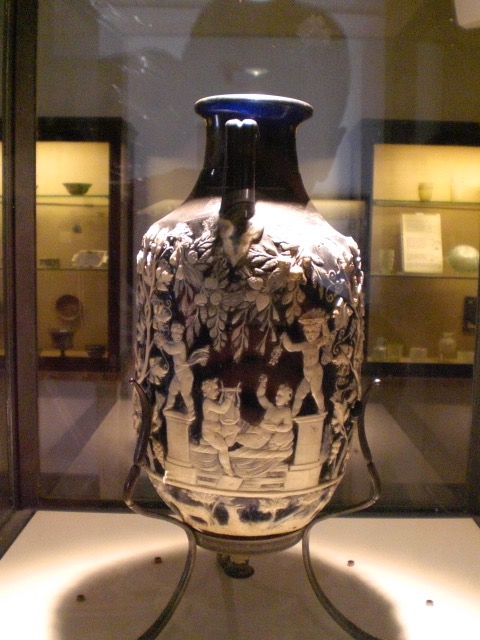|
Cased Glass
Cased glass is a type of glass. It is similar to flashed glass. However, cased glass is made with thicker glass layers. See also * Cameo glass * Stained glass Stained glass is coloured glass as a material or works created from it. Throughout its thousand-year history, the term has been applied almost exclusively to the windows of churches and other significant religious buildings. Although tradition ... References {{Glass-stub Glass Glass types ... [...More Info...] [...Related Items...] OR: [Wikipedia] [Google] [Baidu] |
Flashed Glass
Flashed glass, or flash glass, is a type of glass created by coating a colorless gather of glass with one or more thin layers of colored glass. This is done by placing a piece of melted glass of one color into another piece of melted glass of a different color and then blowing the glass. As well as its use for glass vessels, it has been very widely used in making stained glass since medieval times, often in combination with "pot metal glass", made by colouring molten glass, giving colour all through the sheet. The colored glass can be partly or completely etched away (through exposure to acid or via sandblasting), resulting in colorless spots where the colored glass has been removed. Flashed glass can be made from various colors of glass. A finished piece of flashed glass appears translucent. See also * Cased glass * Glass engraving * Satsuma Kiriko cut glass * Stained glass Stained glass is coloured glass as a material or works created from it. Throughout its thousan ... [...More Info...] [...Related Items...] OR: [Wikipedia] [Google] [Baidu] |
Cameo Glass
Cameo glass is a luxury form of glass art produced by cameo glass engraving or etching and carving through fused layers of differently colored glass to produce designs, usually with white opaque glass figures and motifs on a dark-colored background. The technique is first seen in ancient Roman art of about 30 BC, where it was an alternative to the more luxurious engraved gem vessels in cameo style that used naturally layered semi-precious gemstones such as onyx and agate. Glass allowed consistent and predictable colored layers, even for round objects. From the mid-19th century there was a revival of cameo glass, suited equally to Neo-Grec taste and the French Art Nouveau practiced by Émile Gallé. Cameo glass is still produced today. Roman glass Roman cameo glass is fragile, and thus extremely rare—much more so than natural gemstone cameos such as the Gemma Augustea and Gonzaga Cameo, which are among the largest examples of many hundreds (at least) of surviving clas ... [...More Info...] [...Related Items...] OR: [Wikipedia] [Google] [Baidu] |
Stained Glass
Stained glass is coloured glass as a material or works created from it. Throughout its thousand-year history, the term has been applied almost exclusively to the windows of churches and other significant religious buildings. Although traditionally made in flat panels and used as windows, the creations of modern stained glass artists also include three-dimensional structures and sculpture. Modern vernacular usage has often extended the term "stained glass" to include domestic lead light and ''objets d'art'' created from foil glasswork exemplified in the famous lamps of Louis Comfort Tiffany. As a material ''stained glass'' is glass that has been coloured by adding metallic salts during its manufacture, and usually then further decorating it in various ways. The coloured glass is crafted into ''stained glass windows'' in which small pieces of glass are arranged to form patterns or pictures, held together (traditionally) by strips of lead and supported by a rigid frame. Painte ... [...More Info...] [...Related Items...] OR: [Wikipedia] [Google] [Baidu] |
Glass
Glass is a non-crystalline, often transparent, amorphous solid that has widespread practical, technological, and decorative use in, for example, window panes, tableware, and optics. Glass is most often formed by rapid cooling (quenching) of the molten form; some glasses such as volcanic glass are naturally occurring. The most familiar, and historically the oldest, types of manufactured glass are "silicate glasses" based on the chemical compound silica (silicon dioxide, or quartz), the primary constituent of sand. Soda–lime glass, containing around 70% silica, accounts for around 90% of manufactured glass. The term ''glass'', in popular usage, is often used to refer only to this type of material, although silica-free glasses often have desirable properties for applications in modern communications technology. Some objects, such as drinking glasses and eyeglasses, are so commonly made of silicate-based glass that they are simply called by the name of the material. Despite bei ... [...More Info...] [...Related Items...] OR: [Wikipedia] [Google] [Baidu] |



